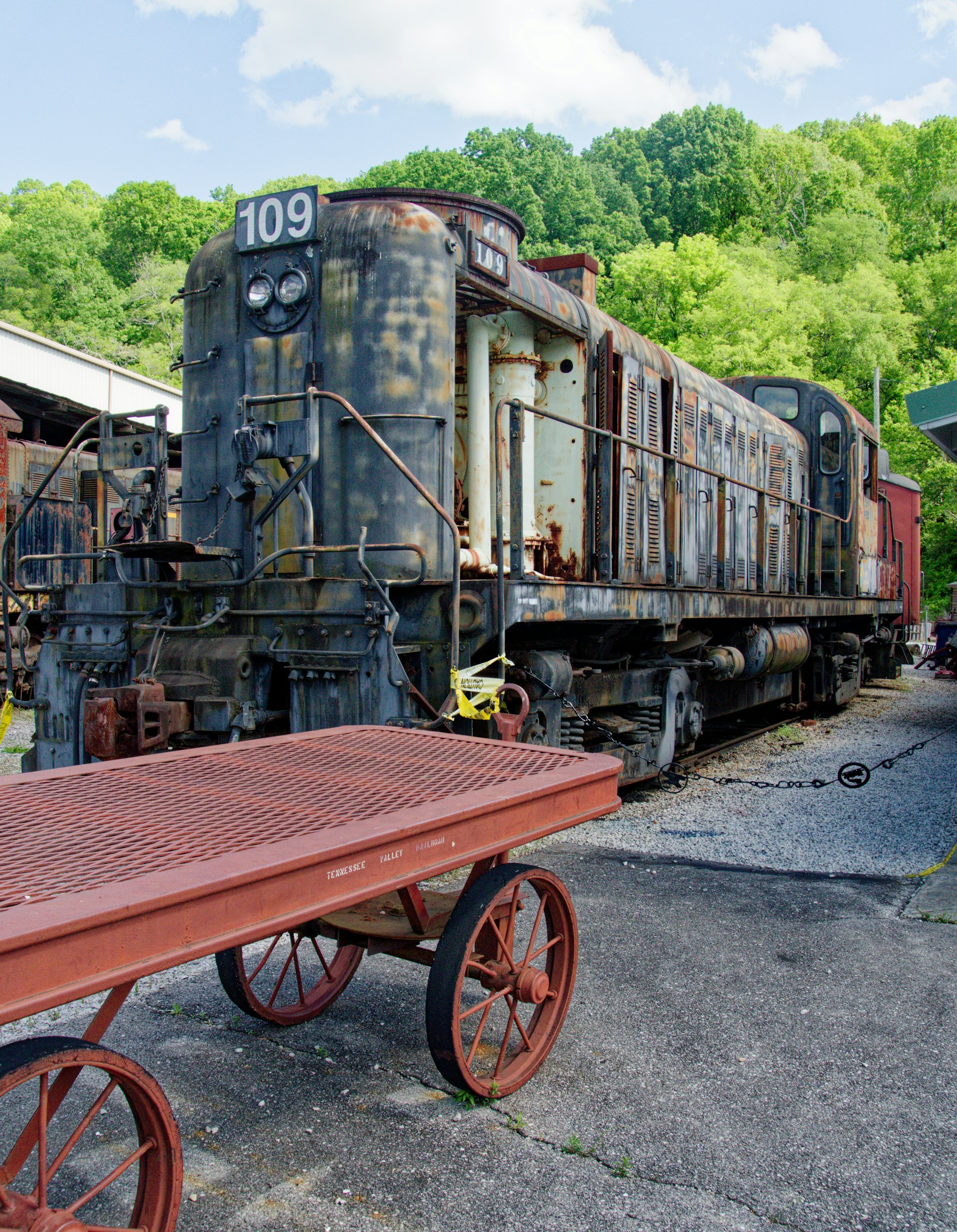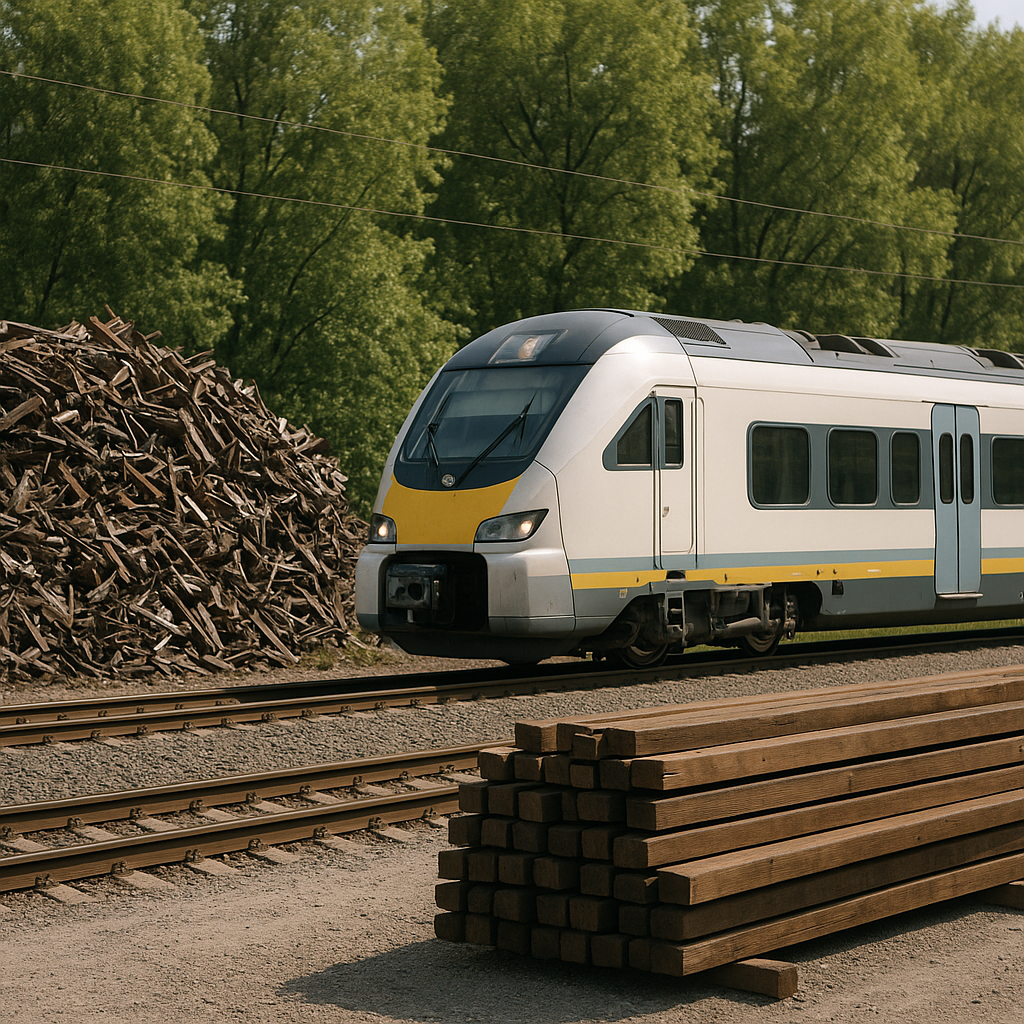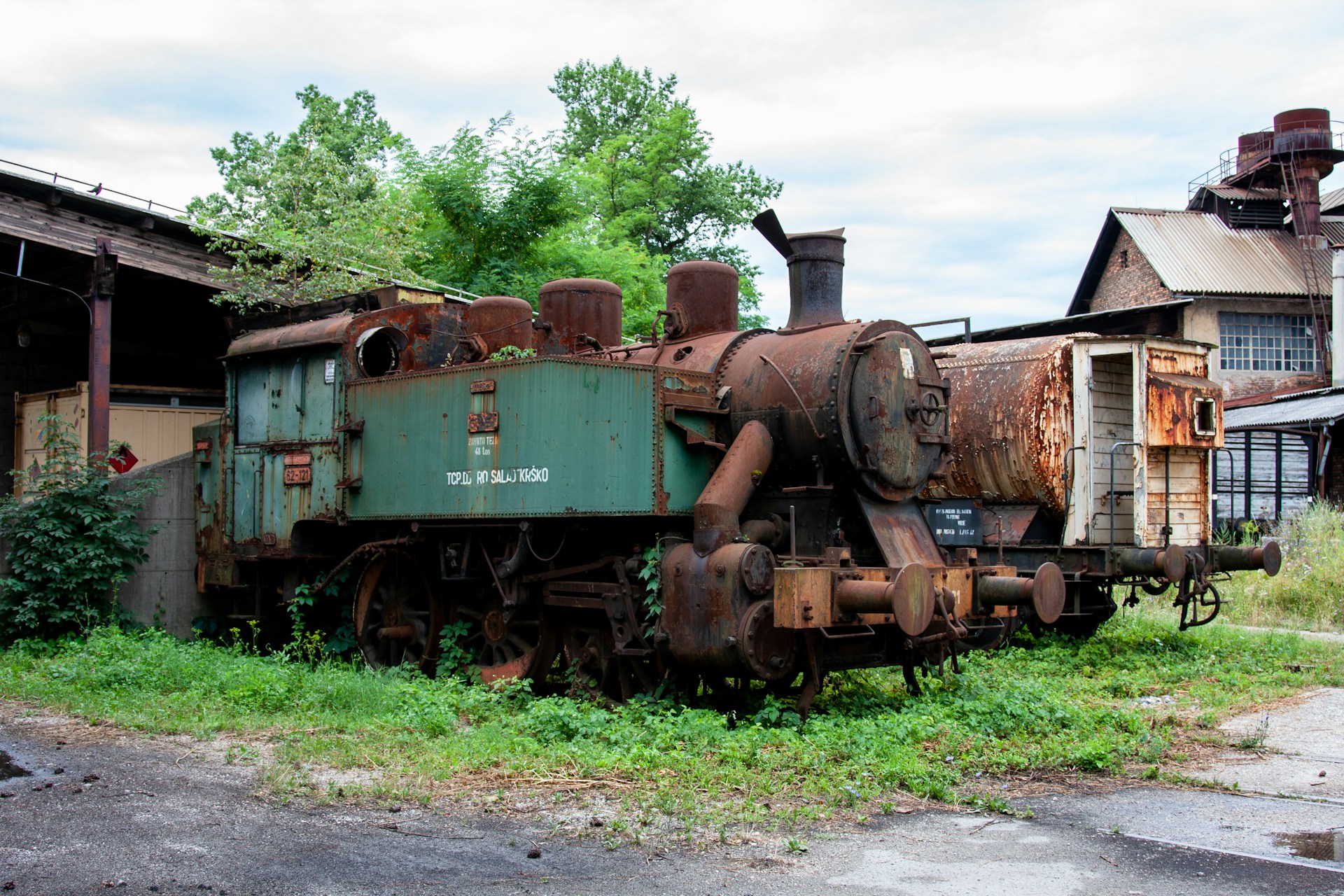5901 Botham Jean Blvd, Dallas, TX 75215
What Are Green Locomotive Recycling Initiatives?
June 20, 2025The railroad industry is adopting a transformative approach to sustainability through green locomotive recycling initiatives. These programs aim to reduce waste and environmental impact while addressing climate change concerns. Locomotives, once at the end of their service life, contain valuable materials that can be recovered and repurposed.
These initiatives extend beyond environmental benefits by creating quality union jobs in communities nationwide. Workers skilled in locomotive technology find new opportunities in disassembly, parts recovery, and materials processing. The positive impact is particularly significant in low-income neighborhoods and communities of color.
Rail yards have historically concentrated pollution in surrounding areas. Green locomotive recycling directly addresses this environmental justice issue by removing pollution sources. Modern recycling practices ensure hazardous materials are handled properly while recoverable components find new uses in a circular economy approach.
How are Railroad Companies Implementing Recycling Efforts?

Railroad companies are partnering with specialized recycling organizations to increase waste diversion rates. Network Rail has teamed up with The Green Block to implement innovative recycling solutions at major transportation hubs.
The cornerstone of these efforts is the Mobile Segregation Unit (MSU), a portable recycling system operating in busy environments like train stations. This technology manually separates waste from trains, public bins, and station retailers into recyclable commodities at the source.
The results are notable. At London Victoria station, where trials started in 2020, Network Rail has recycled over 7,000 tonnes of waste using MSU technology. This initiative is expected to cut carbon emissions by 121 tonnes over a year, equivalent to the weight of a blue whale.
The MSU system offers several advantages over traditional recycling methods:
- Eliminates the need for complex color-coded bins that often confuse travelers
- Provides real-time data tracking through the Plaza system
- Enables digital traceability of waste throughout its lifecycle via QR-coded waste bags
- Achieves recycling rates of up to 98% of commercial waste
The success of the MSU has led to its adoption at other major transportation centers. St Pancras International, Birmingham Airport, and various Network Rail South locations have installed these portable units, significantly improving recycling outcomes where rates have historically been low.
This approach signifies a shift in waste management philosophy. Instead of relying on passengers and staff to sort waste, the MSU system allows for central processing of mixed waste. The technology is particularly effective in complex, multi-tenanted environments like rail stations where traditional recycling methods often fail.
As government regulations on waste disposal become more stringent, railroad companies are leveraging these partnerships to ensure compliance while advancing sustainability goals. The MSU offering reduces regulatory risk while providing significant environmental, social, and governance benefits.
By implementing these advanced recycling technologies, railroad companies are positioning themselves as leaders in sustainable transportation practices. Achieving near-total diversion from landfills represents a significant step forward in the industry’s environmental stewardship efforts.
| Location | Implementation Year | Recycling Rate | Key Benefits | Materials Recycled | Additional Outcomes |
|---|---|---|---|---|---|
| Brighton Station | 2021 | 92% | No additional cost over previous waste management | 32+ tonnes of waste | QR code tracking system, 8 jobs created |
| London Victoria | 2020 | 90%+ | 7,000+ tonnes of waste recycled | 1,500 coffee cups daily | 121 tonnes of carbon emissions reduction annually |
| London Bridge | 2024 | 90%+ | Part of expanded MSU implementation | Part of 42,000 cups recycled every four weeks | Revenue generation from recycled materials |
| London Waterloo | 2024 | 90%+ | Part of expanded MSU implementation | Part of 42,000 cups recycled every four weeks | Revenue generation from recycled materials |
What are the Benefits of Sustainable Railroad Recycling Practices?

Sustainable railroad recycling practices offer significant environmental benefits beyond the rail industry. A single mile of railroad track can produce approximately 90 tons of recyclable steel. This substantial recovery reduces the need for new material extraction and manufacturing, creating considerable environmental advantages.
Railroad recycling supports waste reduction by diverting valuable materials from landfills. When railroad components reach the end of their service life, recycling ensures these materials continue to provide value instead of contributing to waste. This systematic material management supports broader waste reduction goals across the transportation sector.
The energy conservation benefits of railroad recycling are noteworthy. Recycling existing metal requires significantly less energy than extracting and refining virgin materials, translating into lower greenhouse gas emissions throughout the material lifecycle. This reduction in carbon footprint supports climate change mitigation efforts within the rail industry.
Resource management is another critical benefit of railroad recycling programs. Recovering valuable metals like steel, iron, and copper from aging rail infrastructure conserves natural resources that would otherwise require extraction through mining, protecting landscapes and ecosystems from disturbance.
The emission reduction achievements of sustainable railroad recycling are significant. The recycling process generates fewer carbon emissions compared to producing new metals from raw ore. For railroads aiming to reduce their environmental impact, comprehensive recycling programs offer a straightforward path to lowering their overall carbon footprint.
Sustainable railroad recycling also aligns the rail industry with circular economy principles. Materials flow through multiple lifecycles, creating a ripple effect of environmental benefits. This circular approach ensures resources maintain their utility and value as long as possible, minimizing waste generation throughout the system.
The economic benefits of railroad recycling complement the environmental advantages. Recycling can offset decommissioning costs while supporting sustainability goals. Financial returns from recovered materials can fund future green initiatives, creating a self-sustaining cycle of environmental improvement.
Through these recycling programs, the railroad industry demonstrates environmental leadership while addressing waste management challenges. These initiatives align with broader climate change mitigation strategies, positioning rail transportation as a leader in sustainable practices.
Railroad recycling also enhances the already superior environmental profile of rail transportation. Trains inherently have a lower carbon footprint than other freight transport modes. By incorporating sustainable recycling practices, the industry further strengthens its position as an environmentally responsible transportation option.
The local environmental benefits of railroad recycling extend to communities along rail corridors. Responsible recycling practices reduce pollution risks and protect local water resources from potential contamination, helping railroads maintain positive relationships with the communities they serve.
Importantly, sustainable railroad recycling establishes a foundation for greener transportation systems. As railroads implement these practices, they create models for other transportation sectors to adopt, accelerating the transition toward more sustainable transportation infrastructure across the economy.
Railroad recycling practices also support environmental compliance requirements. As regulations on waste management and resource recovery become more stringent, proactive recycling programs help railroads stay ahead of compliance while demonstrating their commitment to environmental stewardship.
How are End-of-Life Locomotives Being Recycled?

End-of-life locomotive recycling has become a sophisticated process that maximizes resource recovery and minimizes environmental impact. Companies like Progress Rail lead this industry with specialized scrap management services that transform retired locomotives into valuable resources rather than waste.
The recycling process begins with careful dismantling of these massive machines. Each locomotive contains about 100 tons of steel, equivalent to the weight of 70 cars. This structural backbone is the largest portion of recyclable material. Specialists meticulously separate steel frames, copper wiring, aluminum components, and other valuable materials to ensure optimal recovery.
Progress Rail exemplifies best practices in this field. Founded on recycling principles, the company has developed an integrated approach that combines dismantling, parts refurbishment, and material recovery. When locomotives reach the end of their operational life, Progress Rail identifies components that can be reconditioned and reintroduced into their inventory. The remaining materials are processed for recycling.
This integration creates a unique advantage. As stated on the Progress Rail website: “When locomotives and railcars are retired, we refurbish the reusable parts, incorporating them into our extensive inventory, and recycling what remains. The proceeds from the sale of the scrap can then be used to offset new equipment purchases or other services.”
Understanding Relay Rail
A notable aspect of locomotive recycling is the concept of “relay rail.” This term refers to track components that have previous service history but remain viable for reuse. While steel is highly recyclable, its durability allows rail sections, plates, and other track elements to be installed and uninstalled multiple times before reaching the end of their useful life.
Relay rail exemplifies the circular economy in action. Instead of processing functional rail into new steel products, these components are inspected, graded, and redistributed for continued use. This practice significantly reduces energy consumption and raw material extraction, as producing new rail requires substantial resources.
The environmental benefits of locomotive recycling extend beyond material conservation. Recycling steel from old rolling stock can reduce CO2 emissions by up to 58% compared to producing new steel. This process also conserves natural resources, with each ton of recycled steel preserving 2,500 pounds of iron ore, 1,400 pounds of coal, and 120 pounds of limestone.
Modern locomotive manufacturers recognize these benefits and now design their equipment with recyclability in mind. Leading manufacturers produce locomotives with up to 97-98% recyclable materials, facilitating more efficient end-of-life processing.
Progress Rail’s commitment to sustainability goes beyond simple metal recovery. Their operations focus on environmental responsibility at every step. From using energy-efficient equipment to implementing water recycling systems, the company views locomotive recycling through a comprehensive sustainability lens.
This approach demonstrates how the rail industry is embracing circular economy principles. By extending the life of components through reuse and ensuring proper recycling of materials that can no longer serve their original purpose, companies like Progress Rail create environmental and economic value from what might otherwise become industrial waste.
Conclusion: The Future of Green Locomotive Recycling

Green locomotive recycling initiatives have become a cornerstone of the railroad industry’s sustainability efforts. These programs provide significant environmental benefits by diverting materials from landfills and using much less energy than mining and processing new materials. With leading rail manufacturers now designing locomotives with up to 98% recyclable components, the industry is adopting circular economy principles that support long-term environmental health.
The impact of these initiatives goes beyond environmental benefits. Green locomotive recycling offers meaningful employment opportunities in communities while reducing pollution around rail yards, which often affects low-income areas and communities of color. Through ongoing innovation in recycling technology and modernization of existing assets, the rail industry is well-positioned to significantly reduce its carbon footprint while maintaining operational efficiency.
For organizations seeking expert guidance on specialty equipment recycling, including locomotives and other transportation assets, contact Okon Recycling at 214-717-4083.
